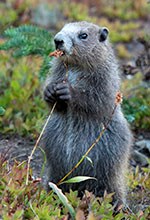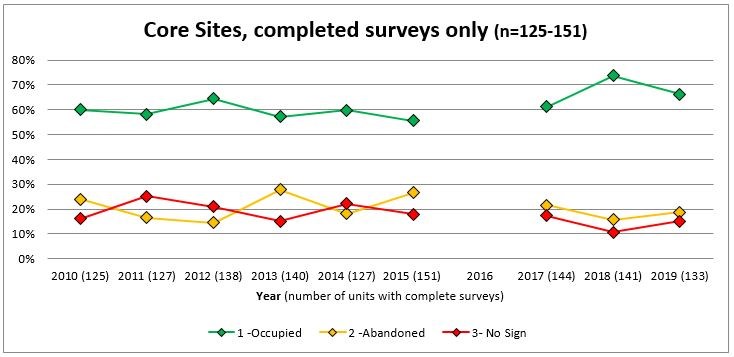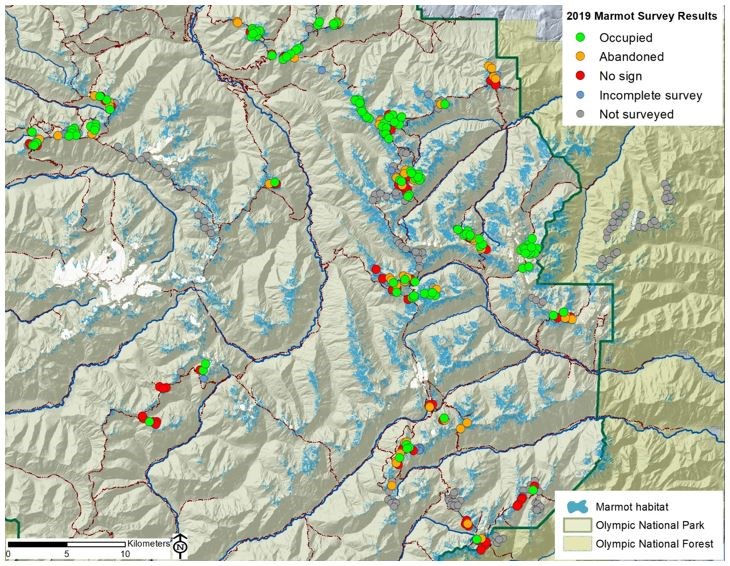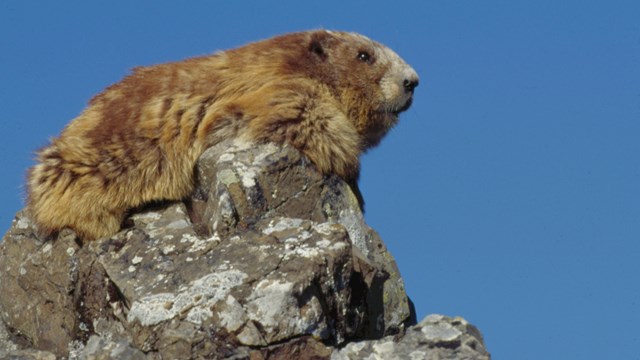
Photo by Ken & Mary Campbell (c) Program Overview and Results of the 2019 Field Season

NPS 
NPS
Acknowledgements 2019 this project was supported by a continuing grant from Washington's National Park Fund. This whole endeavor would not have been possible without the hard work of the 81 volunteer citizen scientists who donated over 3400 hours! 
Olympic Marmots
Learn more about the Olympic Marmot. 
Marmot Monitoring Volunteers
Teams of volunteers hike to locations within Olympic National Park to record up-to-date information about the Olympic Marmot. 
Marmot Research, Reports, and Links
Learn more about the research on Olympic Marmots. |
Last updated: July 18, 2024
